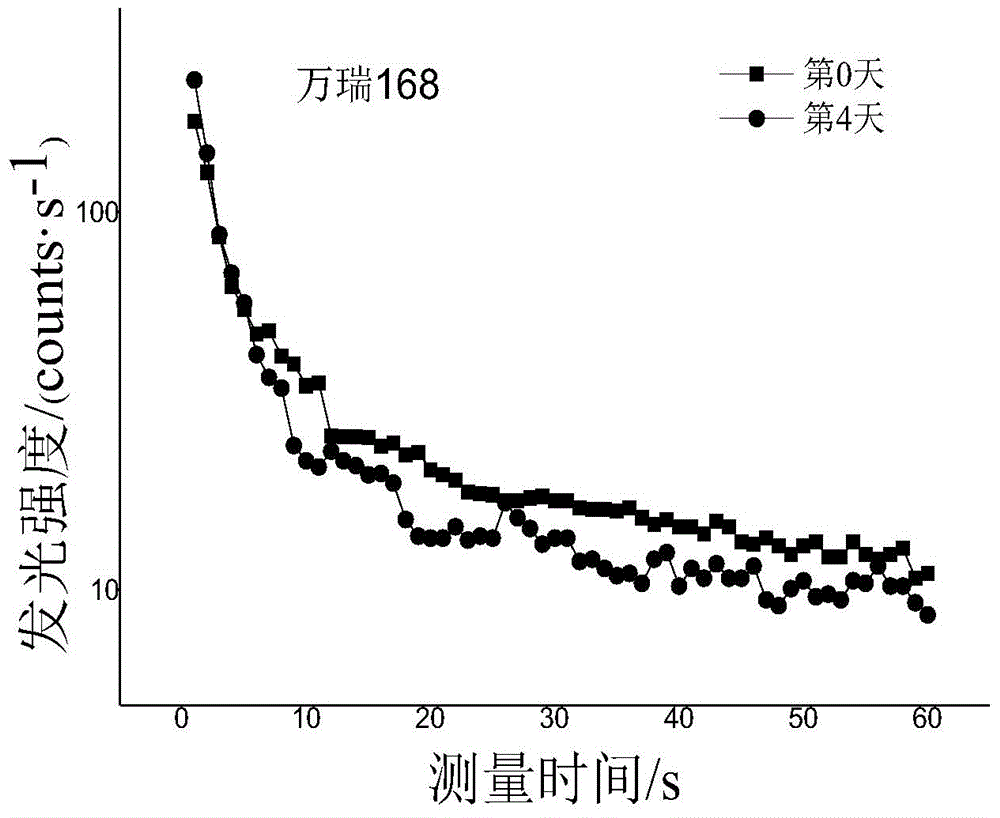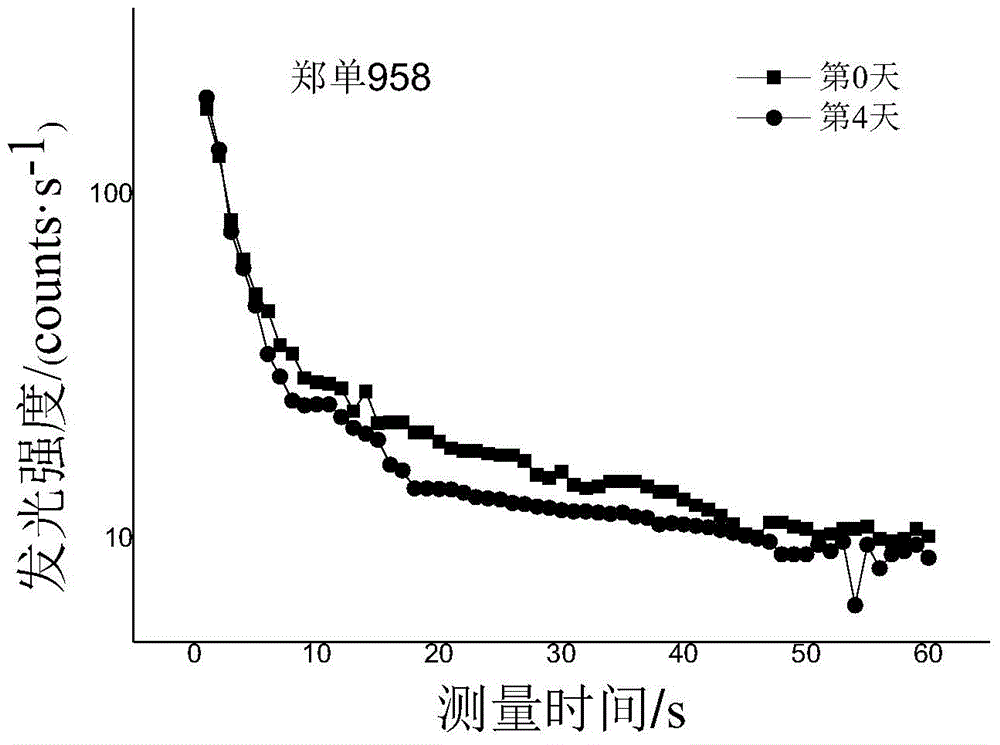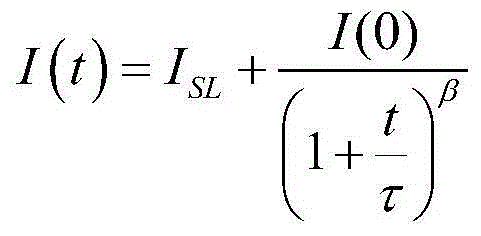Method for evaluating crop salt tolerance by utilizing external light to induce seed to illuminate
A technology of external light and salt tolerance, applied in the field of agricultural biology, can solve the problems of unsuitable evaluation of rare varieties, failure of early diagnosis, destructive measurement, etc., and achieve the effect of reliable evaluation, less seed consumption, and rapid evaluation
- Summary
- Abstract
- Description
- Claims
- Application Information
AI Technical Summary
Problems solved by technology
Method used
Image
Examples
Embodiment
[0054] Wanrui 168 with strong salt tolerance and Zhengdan 958 with weak salt tolerance were selected.
[0055] The plump seeds with consistent appearance were washed with distilled water, and the mass fraction was added with 0.2% HgCl 2 After disinfection and cleaning, dry the surface moisture with filter paper, place 7 seeds of each of the two varieties in the sample cup of the sample room of the BPCL weak luminescence measuring instrument (developed by the Institute of Biophysics, Chinese Academy of Sciences), and measure after dark adaptation for 10 minutes Spontaneous luminescence intensity of seeds I SL ,, the measurement time is 60s, the time interval of collecting data is set to 1s, and the working voltage is -1000V. Before each measurement, the background was determined and subtracted. I SL The unit is counts / s.
[0056] After measuring the spontaneous luminous intensity I SL Finally, the same batch of seeds was irradiated with blue LED for 30s, and the luminescen...
PUM
 Login to View More
Login to View More Abstract
Description
Claims
Application Information
 Login to View More
Login to View More - R&D
- Intellectual Property
- Life Sciences
- Materials
- Tech Scout
- Unparalleled Data Quality
- Higher Quality Content
- 60% Fewer Hallucinations
Browse by: Latest US Patents, China's latest patents, Technical Efficacy Thesaurus, Application Domain, Technology Topic, Popular Technical Reports.
© 2025 PatSnap. All rights reserved.Legal|Privacy policy|Modern Slavery Act Transparency Statement|Sitemap|About US| Contact US: help@patsnap.com



